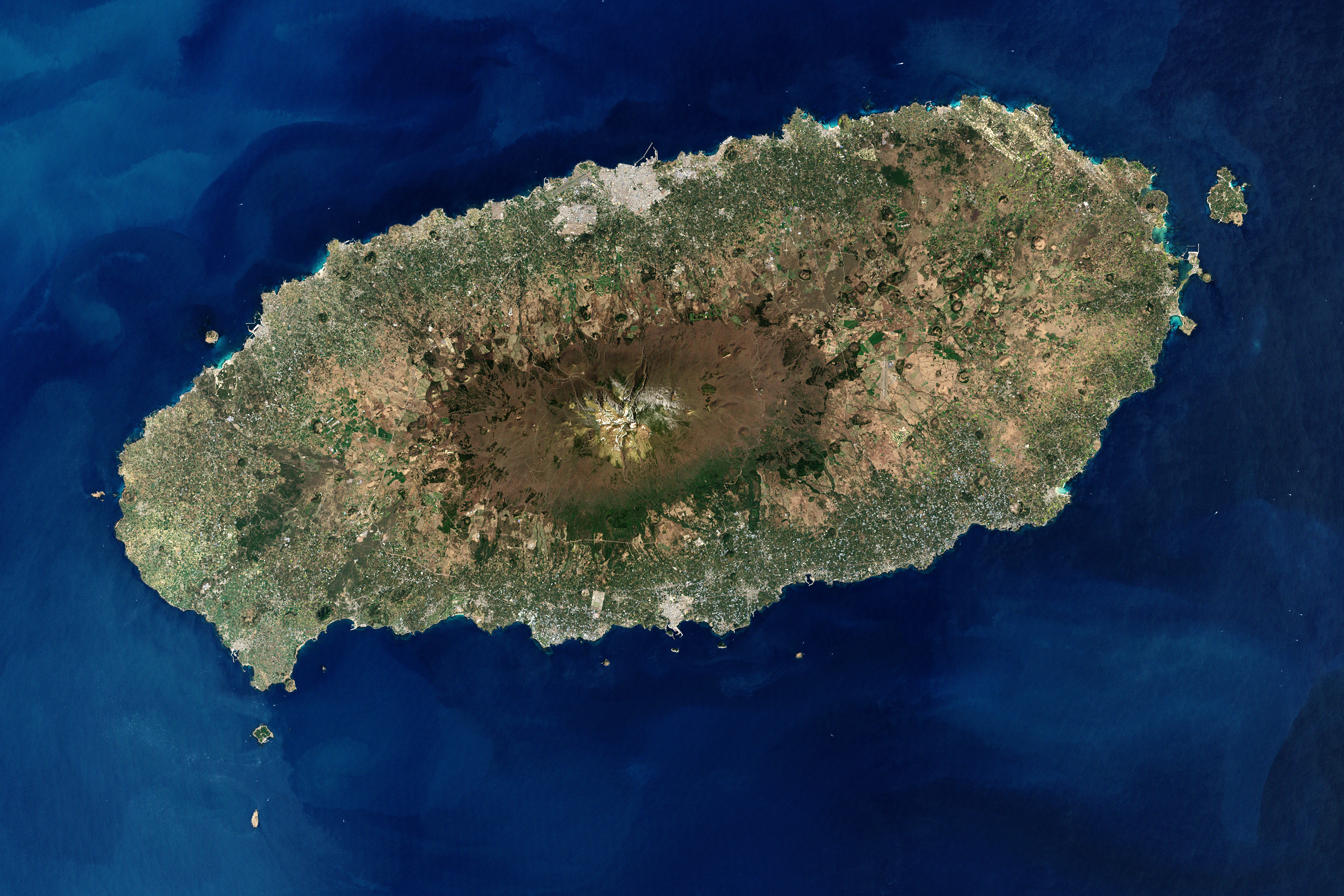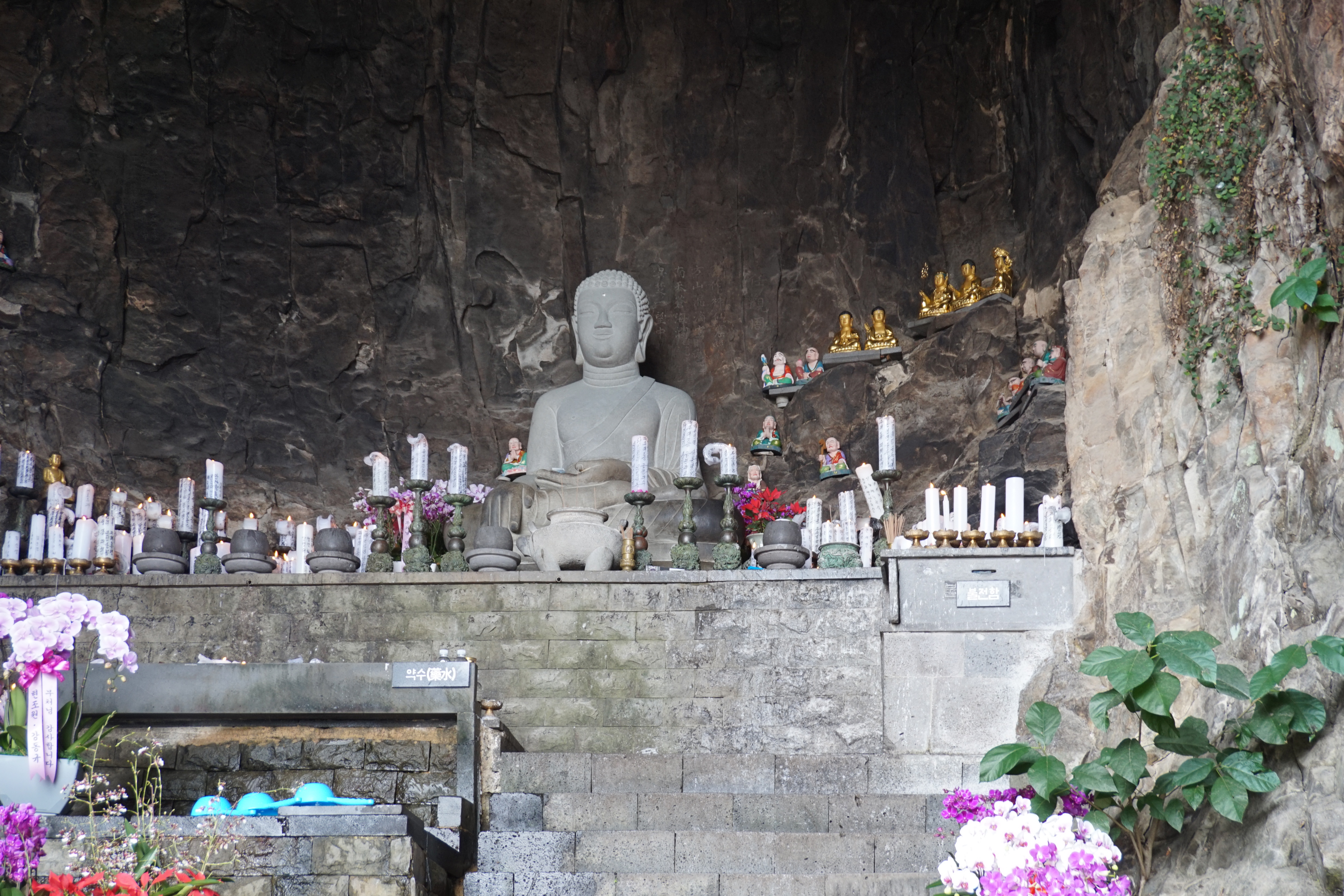|
Oreum
''Oreum'' () refers to the around 360 small rising extinct volcanoes on Jeju Island, in Jeju Province, South Korea. They are commonly described as cinder cones or parasitic cones, and are often inside larger volcanic craters. Etymology The word ''oreum'' comes from the Jeju language. It refers to small mountains. "Oreum" itself originates from the word "climb" (). The word is now considered to refer to Jeju's numerous small parasitic cones (; also ). Description Around 360 ''oreum'' are distributed throughout Jeju. Their formation and preservation are due in part to the high permeability of the volcanic rock. Magma erupting under pressure can solidify into scoria, which may fall and pile up around a crater to form circular and elliptical scoria cones and cinder cones. These are popularly known as ''oreum'' in Jeju Island. There are about 360 such ''oreum''. ''Oreum'' are classified as cinder cones, lava domes, fault blocks, or cryptodomes. ''Oreum'' are considered ... [...More Info...] [...Related Items...] OR: [Wikipedia] [Google] [Baidu] |
Jeju Province
Jeju Province, officially Jeju Special Self-Governing Province, is one of the nine provinces of South Korea. The province comprises Jeju Island (; ), formerly transliterated as Cheju or Cheju Do, the country's largest island. It was previously known as Quelpart to Europeans and during the Japanese occupation of Korea, Japanese occupation as Saishū. The island lies in the Korea Strait, southwest of South Jeolla Province, of which it was a part before it became a separate province in 1946. Its capital is Jeju City and it is home to South Korea, South Korea's tallest mountain, Hallasan. History Early history According to the legend, three demigods emerged from Samseong mythology, Samseong, which is said to have been on the northern slopes of Halla Mountain, Mt. Halla and became the progenitors of the Jeju people, who founded the Kingdom of Tamna. It has also been claimed that three brothers, including Ko-hu, who were the 15th descendants of Koulla, one of the progenitors of the Jej ... [...More Info...] [...Related Items...] OR: [Wikipedia] [Google] [Baidu] |
Seongsan Ilchulbong
Seongsan Ilchulbong, also called ‘Sunrise Peak’, is an archetypal tuff cone formed by hydrovolcanic eruptions upon a shallow seabed about 5 thousand years ago. Situated on the eastern seaboard of Jeju Island and said to resemble a gigantic ancient castle, this tuff cone is 182 meters high, has a preserved bowl-like crater and also displays diverse inner structures resulting from the sea cliff. These features are considered to be of geologic worth, providing information on eruptive and depositional processes of hydromagmatic volcanoes worldwide as well as past volcanic activity of Seongsan Ilchulbong itself. Geological characteristics Seongsan Ilchulbong Tuff Cone was formed by Surtseyan-type hydrovolcanic activity upon a shallow seabed about 5,000 years ago when the sea level was same as the present. Most volcanic cones or ''oreum''s (Jeju dialect for volcanic cones) were formed by piles of scoria cones which are created by Hawaiian eruptions or Strombolian eruptions. ... [...More Info...] [...Related Items...] OR: [Wikipedia] [Google] [Baidu] |
Jeju Volcanic Island And Lava Tubes
The Jeju Volcanic Island and Lava Tubes is a World Heritage Site in South Korea. It was inscribed as one of the UNESCO World Heritage Sites in 2007 because of the Geomunoreum Lava Tube System and the exhibition of diverse and accessible volcanic features which are considered to demonstrate a distinctive and valuable contribution to the understanding of global volcanism. Jeju, also known as Jejudo, is a volcanic island, 130 kilometers from the southern coast of the Korean Peninsula. The largest island and smallest province in South Korea, the island has a surface area of 1,846 square kilometers. Formations A central feature of Jeju is Hallasan, the tallest mountain in South Korea and a dormant volcano, which rises 1,950 meters above sea level. The main volcano includes 360 satellite volcanoes. Volcanic activity on Jeju began approximately in the Cretaceous and lasted until the early Tertiary period. The most recent eruptions are estimated to be about 5,000 years ago, which puts ... [...More Info...] [...Related Items...] OR: [Wikipedia] [Google] [Baidu] |
Baengnokdam
Hallasan is a shield volcano on Jeju Island in South Korea; it is the highest point of South Korea and the second-highest mountain in Korea overall, after Paektu Mountain. The area around the mountain is a designated national park, the Hallasan National Park (, ). Hallasan is commonly considered to be one of the three main mountains of South Korea, along with Jirisan and Seoraksan. Names Hallasan is the highest mountain in South Korea and is worshipped by people as they believe that gods and spirits live on the mountain. Alternate English names for the mountain include Hanla Mountain or Mount Halla and older English sources refer to the peak as Mount Auckland. Hallasan is written in Hangul as if it were ''Hanrasan'' (); however, it is still pronounced as ''Hallasan''. In the past, Hallasan has been known by numerous other names in Korean including ''Buak'' (/), ''Wonsan'' (/), ''Jinsan'' (/), ''Seonsan'' (/), ''Dumuak'' (/), ''Burasan'' (/), ''Yeongjusan'' (/), and ''Hyeo ... [...More Info...] [...Related Items...] OR: [Wikipedia] [Google] [Baidu] |
Sanbangsan
Sanbangsan () is a volcano located on the southwest coast of Jeju Island, in , Seogwipo, Jeju Province, South Korea. It is a trachytic lava dome that is tall. Part of the Jeju Island UNESCO Global Geoparks, UNESCO Global Geopark, the mountain is a popular tourist site and one of Jeju Island's main scenic geological features, alongside Hallasan and Seongsan Ilchulbong. Etymology and mythology Sanbangsan means "mountain with a cave". This name refers to the cave Sanbanggul (), which is located on the mountain. Water that falls from the ceiling of the cave is said to be the tears of Sanbangdeok (), a goddess that protects the mountain. According to legend, the grandmother deity Seolmundae Halmang plucked Hallasan's peak and fashioned it into Sanbangsan's current form. Description The mountain is a lava dome made of trachyte, and is largely a light gray color. It is 395 m tall. It is roughly circular, occupies of space, has a circumference of , and has a diameter of . Unlike ... [...More Info...] [...Related Items...] OR: [Wikipedia] [Google] [Baidu] |



